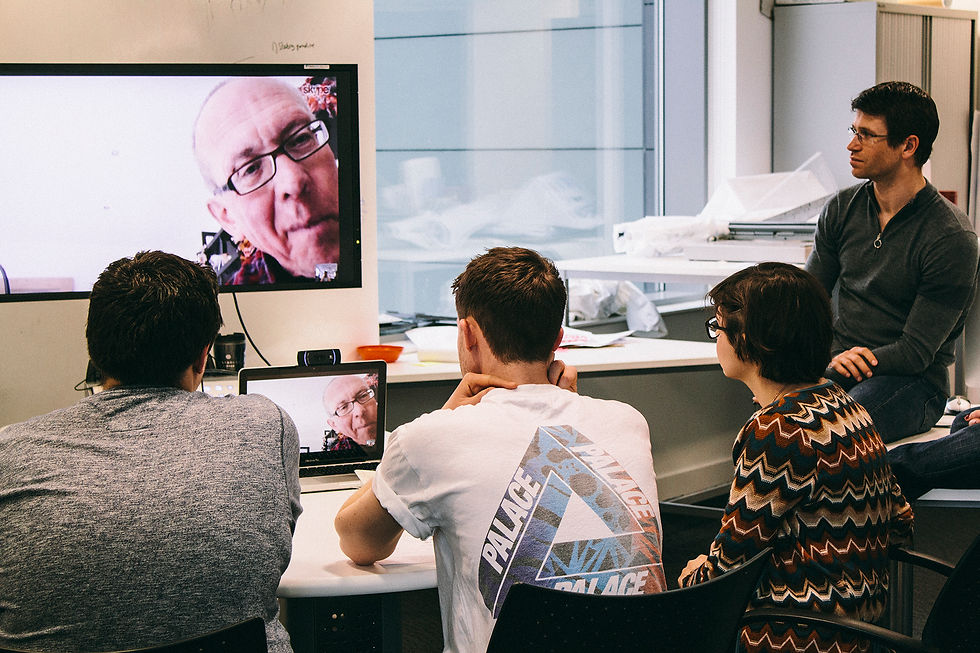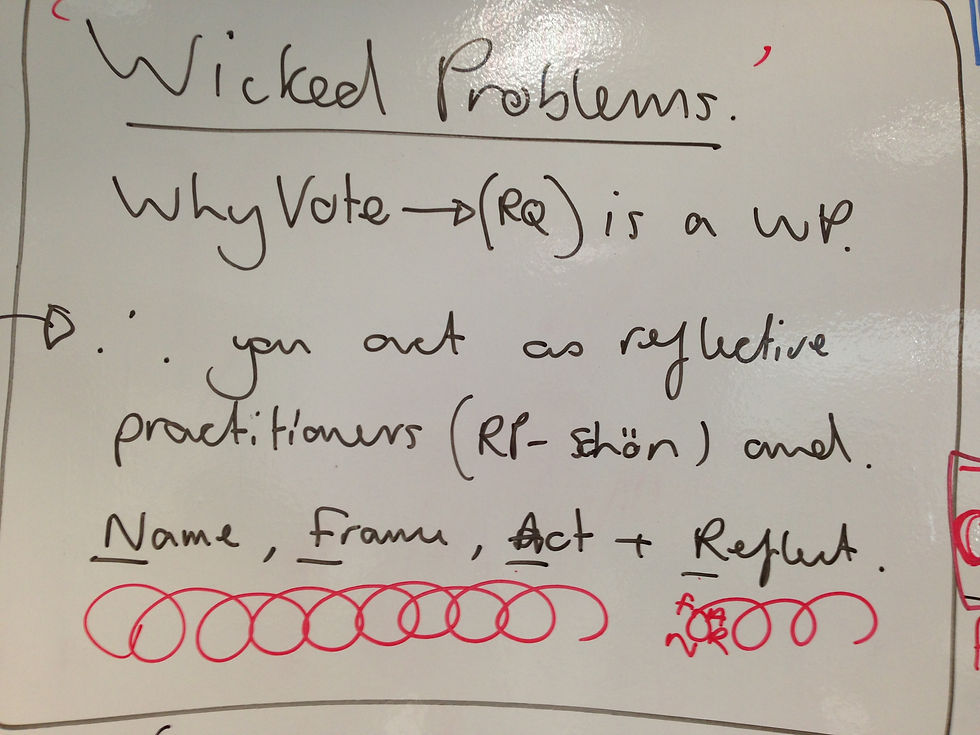METHODS AND COMMUNICATIONS
Reflecting back on semester one at the beginning of semester two I came to the conclusion that I used a multiple different ways of communicating my ideas and journeys through the projects I conducted but not enough focus was on the methods and testing different creative problem solving to produce different results. I wanted to ensure that this semester I tried different techniques and design research methods to progress the projects over the next few months, so I sought opportunities where I could try out varied methods to collect data and research. Looking deeper into research methods and its importance within a multidisciplinary innovation environment I researched into Ilpo Koskinen’s and John Zimmerman ‘s Design Research Through Practice literature. Only in the past 20 years we have begun to see the growth of ‘generative’ research methods that put design practice at the core of the research process. These design inspired methodologies include experience prototypes, design games, and many types of traditional design tools such as collages, mood boards, storyboards, scenarios, ‘personas’ and various types of role-plays. There is no shortage of such methods with companies like IDEO introducing their 52 cards with different research methods and Froukje Sleeswijk Visser listing 44 user-centered methods in her doctoral thesis at Delft. One prominent point I noticed of these new research methods is the speed in which they have gained influence and even has begun adopting an audience out with design. Companies such as IDEO who have progressed this area of “generative” research; are just as well known to the business community as they are in the design world. Methods such as cultural probes, personas and action research have spread fast, giving designers ways to research issues such as user experience. In addition to this these progressions have allowed the design process to be open to multiple stakeholders, helping a course like mine with multidiscipline professionals not always well versed in design to understand and help build the research. After exploring in this area I realized how imperative it was to select the right research method for the right situation.
Centre for Life Limitations
During the Centre for Life project I wanted to try and complete a well-rounded plan that encapsulated multiple methods and communications to showcase our work. At the beginning of the project I conducted multiple field trips to gather information, using these experiences to scope and uncover new information. This was extremely helpful to visualize and contextualize the project, as I had no experience with public displays before. On reflection I would of liked to revisit the Centre for Life at least a second time to measure up the space, ensuring we did not breach our usable area. Further along the project the communication method was decided to use a booklet format to hand over to the client. In hindsight the booklet was not the clearest way to communicate our research, and it was difficult to produce as there was a tight deadline and the programme used could only be edited by one individual at a time. Within this project I felt there was a good spread of communications to showcase the research and development but as a final presentation there should have been more of a visual focus to explain clearly to the client the important information we uncovered. We also as a cohort did not use enough variety of methods in the development phrase and this was evident when we came to contextualizing the final work.
Low Simonside: Testing other Methods
Low Simonside Community Centre projects was one of the most successful projects over the semester in my view, the work was well rounded and well considered; and that was heavily influenced by the methods and communications used in this project. After analyzing the weak points and mistakes made within the Centre for Life project (which was still a good project just not as strong), I wanted to ensure that this project included more concrete research methods to safeguard the clarity of the development and output. From the outset I strived to experiment with new approaches to this project, especially around the innovation methods used. There was a great opportunity to use some social research strategies with the multiple stakeholders involved in this project. At the beginning of the project where we conducted our initial field trip to the centre we needed to clarify some initial questions to ask. We needed to be clear with the questions we were asking depending on what kind of information we were trying to gather, as we knew it would be more qualitative research. Since we were writing the brief ourselves we needed specific scoping questions about what the strengths and weaknesses were and where we could add value. Through these preliminary personal interviews we gained some invaluable insights that set us up for the remainder of the project. As a cohort we clearly communicated all these findings in our separate groups on returning from the field trip, meaning that the cohort were all well informed and had the same level of understanding.
We were given the opportunity to host a ‘coffee morning’ at the centre, to uncover more information about what the community needs and thoughts were. I wanted to be organized about this focus group morning, as we needed to get the most valuable information from them. As I have hosted focus group sessions before I suggested we use a technique called ‘world café’. The World Café workshop methodology seeks to foster an environment that is good for conversations to develop. The approach is a style of workshop or meeting that gets authentic conversations started in order to encourage the sharing of ideas in a relaxed, informal and creative atmosphere. I have found in the past this to be an extremely useful way of gathering data and insights. After going some research into other methods we could use, from Dave Gray’s ‘Gamestorming’ book, we decided to stick with the world café technique, as it allowed us to be flexible, as we were unsure on numbers or materials at the centre. On the day the turnout was relatively low, but as we were prepared it allowed us to get some valuable insights from the individuals there. Reflecting back, I felt this whole exercise was productive and helped build strong insights for the flowing weeks idea generation.
Some images from the world cafe




Summary of Learning
Using a wider variety of methods and communications this semester has allowed me to realize the value of trying new things. When beginning a project I tend to stick to the techniques I know, but by pushing myself to think outside the box and use new research methods and ways of communicating this information has allowed me to produce a higher standard of work. I will endeavor for the next semester to continue to experiment with new ways of innovating.



